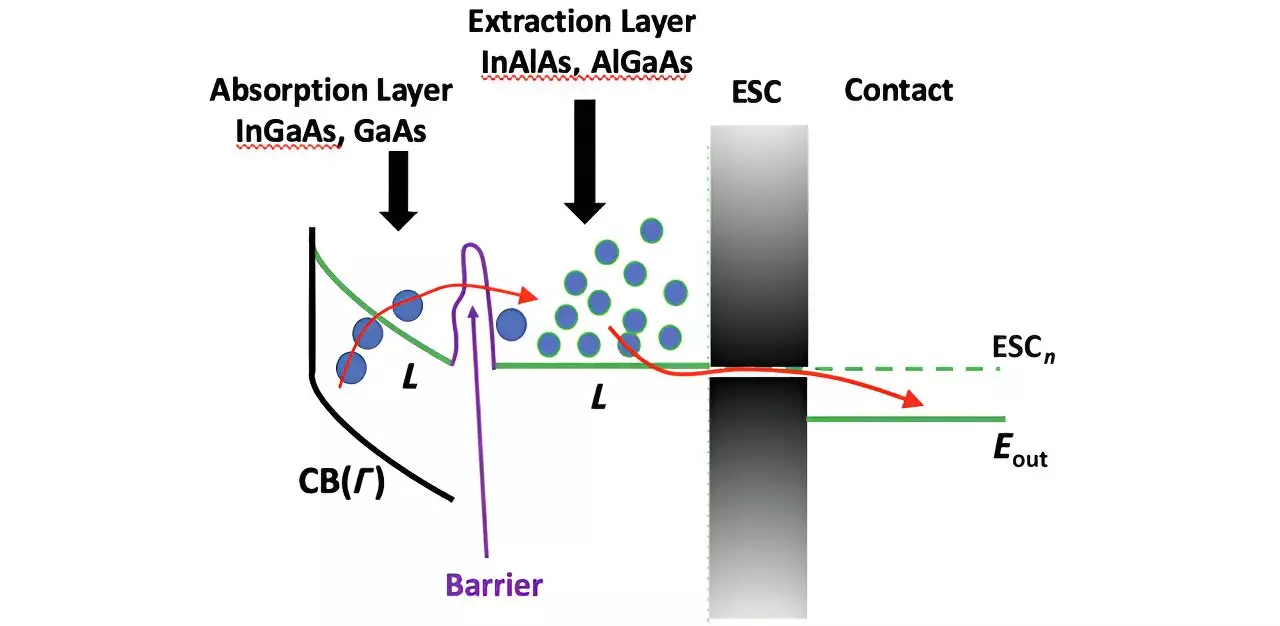The pursuit of more efficient solar energy technology has led to innovative concepts over the decades, with hot carrier solar cells being at the forefront of this research. Originating from theoretical discussions several decades ago, hot carrier solar cells promise not just incremental improvements, but revolutionary advances in the efficiency of solar energy conversion. One key feature of these cells is their potential to exceed the Shockley-Queisser limit, the theoretical cap for efficiency in single-junction solar cells. However, despite significant interest and investment, practical realization has been hampered by considerable technical challenges associated with hot electron extraction.
A central difficulty in harnessing hot carriers lies in the rapid extraction of these highly energetic electrons across various material interfaces. Researchers have explored the viability of using the so-called satellite valleys in the conduction band to temporarily harbor these hot electrons before their eventual collection. Nonetheless, experiments have consistently shown that a parasitic barrier exists at the interface between the absorber and the extraction materials, complicating the extraction process. This barrier arises when the energy bands of the materials in contact are not perfectly aligned, impeding the efficient transfer of hot carriers.
In a recent study published in the Journal of Photonics for Energy, significant strides were made in understanding this tunneling mechanism, which is crucial for electron transfer across heterostructures. Researchers employed an empirical pseudopotential method, allowing them to analyze energy bands in momentum space while aligning theoretical predictions with experimental observations. The insights gleaned from this analysis have illuminated the complexities of tunneling, particularly how electrons can circumvent barriers via quantum tunneling, a phenomenon influenced by intricate band structures. This research not only proves the necessity of advancing our fundamental understanding of these processes but also sheds light on pathways to potentially overcome the limitations set by traditional single-bandgap solar cells.
The specific materials employed in the construction of hot carrier solar cells play a pivotal role in the efficiency of hot carrier extraction. The study highlighted that the tunneling efficiency is particularly pronounced in structures composed of indium-aluminum-arsenide (InAlAs) and indium-gallium-arsenide (InGaAs). Here, the mismatch in energy bands creates a significantly large tunneling coefficient, which describes how easily electrons can traverse the barrier. However, this performance is notably compromised by minor roughness at the material interfaces, suggesting that even minuscule imperfections can have pronounced detrimental effects.
Conversely, a different material combination—aluminum gallium arsenide (AlGaAs) and gallium arsenide (GaAs)—demonstrates a markedly improved efficiency in electron transfer. This success is attributed to the configuration of the aluminum content within AlGaAs, which generates a degeneracy in the lower energy satellite valleys, leading to superior energy band alignment and allowing for atomic-precision growth. In this context, the tunneling coefficient can soar as high as 0.88, indicating a substantial leap towards optimal energy transfer processes that could facilitate the realization of more efficient hot carrier solar cells.
Interestingly, while the movement of electrons from AlGaAs to GaAs is regarded as a conventional operation in high-electron mobility transistors, it has significant implications in valley photovoltaics. Here, the migration of hot carriers backward—termed real-space transfer—transforms from a drawback into a vital mechanism that enhances the efficiency of solar conversion. This observation opens exciting new avenues for the design and implementation of solar cell architectures that capitalize on both the storage and retrieval of hot carriers, progressing toward the ambitious bid to breach existing efficiency caps.
The developments in hot carrier solar cell technology signify a promising trajectory toward a more efficient future in solar energy solutions. As researchers continue to confront and unravel the technical barriers associated with hot electron extraction, the synergy of advanced material choices and strategic engineering could ultimately lead to the widespread deployment of high-efficiency solar cells. The critical understanding of quantum tunneling processes and innovative material combinations is not merely an academic exercise; it is a pivotal step towards realizing a sustainable energy future that harnesses the full potential of solar power. Embracing these advancements may soon bring us closer to a world where solar energy not only meets but exceeds our energy demands.

